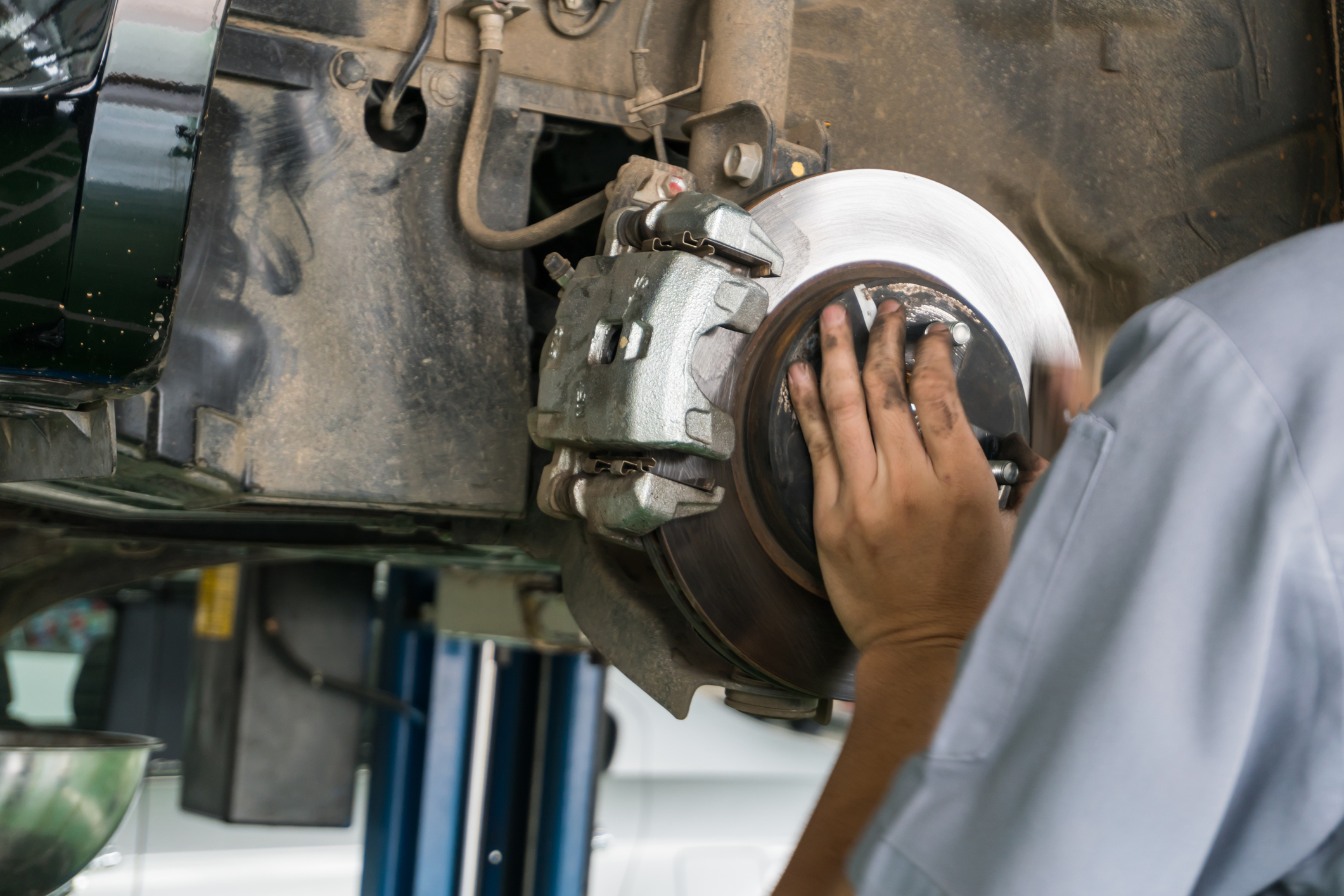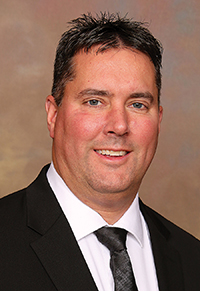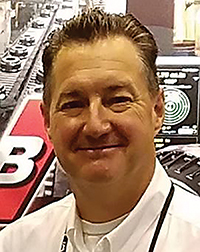
![]() BUSRide Maintenance spoke to brake system experts about best practices, cost savings and sustainability.
BUSRide Maintenance spoke to brake system experts about best practices, cost savings and sustainability.

Director of Marketing and
Customer Solutions
Bendix Spicer Foundation Brake LLC
What are the latest advances in brake design, materials and engineering that are designed to help extend or maximize brake life?
Keith McComsey: At Bendix, we are always looking for ways to improve brake performance, reduce initial cost, optimize for weight, lower total cost of ownership (i.e. extending brake life), and help users plan their maintenance.
Bendix engineers design air disc brake systems optimized for a wide range of applications. That optimization comes, among other things, by taking weight out (without sacrificing durability), and by extending pad life through adjuster mechanism designs that provide improvements to reduce the risk of brake drag (associated with vibration). We recently launched a new air disc brake pad that further extends pad life over what current typical air disc brake pads offer today. We’ve also developed ADB wear sensing technology which notifies operators when their pads are nearing the end of their useful life. In addition, we continue to develop brake systems that are coupled with other active safety systems to provide a comprehensive, integrated safety benefit.

Regional Sales Manager, Southeast
Mohawk Manufacturing & Supply Co.
Terry Muellner: Mohawk Manufacturing and Supply Co., which is a family-owned aftermarket transit bus and motorcoach parts supplier founded in 1958, has seen many different advancements through the years. In the late ‘80s or early ‘90s there was a wedge break system, that was supposed to change the S-cam system. That ended up being more labor intensive, and it didn’t work as well. So, it went back to an S-cam system. Then aggressive retarders came out. It slowed the bus down so you’re not using as much of the brake material.
Auto-neutral was also added, which does two things. When you come to a stop, the transmission goes into auto-neutral mode. That saves on fuel economy. And the brakes aren’t holding as much of the bus as they would if it wasn’t auto-neutral. On the hybrid system you have regenerative braking. Which also helps to stop the bus.
Currently, you have two choices that we see and provide material and parts for in the transit industry. One is the disc brakes you see on three out of four buses that are offered. Two is drum brakes; two of the OEs still offer them. They give the choice to the end user.

Director of Sales, Transit & Severe Duty
Webb Wheel
Chip Hurst: While most of the recent efforts in advancing brake design has been focused on air disc brakes, Webb has also invested in developing the Vortex® drums which provide an innovative solution to the high heart demands of typical bus and coach applications. In developing the Vortex® drums, Webb Engineering improved its design for optimal heat dissipation qualities. To compliment that, Webb has now developed an extensive offering of rotors to address the growing air disc brake market. In many cases, these rotors include the unique LifeShield™ heat treatment process which creates an invisible protective layer across the entire rotor surface to help fight corrosion and extend the product life cycle.
Mark Barker: Air disc brakes, engine retarders, regenerative retarders, and electromagnetic drive line retarders are leading to double and even triple previous wheel end foundation brake life expectancy. And while disc brakes have been used in the transit industry for some time, they are just now showing up on commercial vehicles. This will be a major improvement in not only life but performance, as well.

Business Unit Director for
Hendrickson Wheels &
Braking Systems
Hendrickson
Jeff Wittlinger: Buses tend to experience high duty-cycles, often characterized by heavy stop-and-go city routes. As such, fleets seek to extend brake wear life on an air-drum brake system by specifying 10-inch wide drums. Although excluded from the reduced stopping distance (RSD) laws that were mandated for Class 8 trucks, the transit and bus markets are adopting air disc brakes (ADB) at a rapid pace. Disc brakes can provide noticeable weight savings, and service routines like pad changes can save time compared to drum brakes.
The school bus market is also experiencing growth in ADB since the driveline parking brake and hydraulic control systems can be eliminated when a disc is spec’ed. Going forward, corrosion will continue to be a tough issue for brake manufacturers to overcome. Using advanced coatings on key components like tone rings (or in the case of Hendrickson’s MAXX22T, a stainless-steel tone ring) can help prevent parts from rusting out before wearing out to avoid unnecessary downtime.
Robin Stow: There are three key advances in brake systems that promote brake life.

Sales Manager, Transit &
Motor Coach Markets
Haldex
Firstly, new developments in brake materials for severe-duty applications help prolong brake life by up to 25 percent, depending on application. Copper-free formulas have demonstrated better performance standards in stopping power and wear resistance, while meeting strict environmental standards. Secondly, the transition to air disc brakes from drum brakes in commercial vehicles has significantly increased service intervals, when compared to drum brakes. Thirdly, the movement to electrification in the bus and transit industry is redefining the components side as regenerative braking significantly extends brake life. Regenerative braking captures a significant portion of the energy lost during the braking process. Braking events are much less severe and therefore brake life is extended significantly.
What key considerations should our readers take into account when spec’ing and maintaining brake systems?
Stow: It is critical to consider the vehicle’s duty cycle when spec’ing and maintaining

Vice President, Global Aftermarket Sales
AxleTech
brake systems. For instance, a transit application will require different friction formulas and maintenance schedules than an application with a moderate or light duty cycle. Routine brake inspections as part of the maintenance schedule are also important to consider.
Wittlinger: Air disc brakes are relatively new, so the aftermarket is not mature. Components can be difficult to procure, so partnering with an OEM who can react quickly and maintain a steady flow of product through its distribution network is important for maximizing uptime.
Additionally, Hendrickson always recommends using OEM components for optimal performance. OEMs can conduct the proper testing to maximize system wear life and to ensure components meet durability requirements for safe operations.
Another advantage of ADBs is the potential to use the same pads and caliper replacement parts on the steer and drive axles.
Barker: As always; cost vs. life expectancy, efficiency, service intervals and manufacturer support are key considerations. Don’t underestimate the value of good drums and rotors, in this case, “more is more”; these are the heatsinks. A heavy drum or rotor means more thermal mass (the ability of a material to absorb and store heat energy). The more the thermal mass, the more the ability to transfer the heat generated at the surfaces of the drums and rotors to the atmosphere. This will result in less wear and better friction material performance.
Hurst: When specifying brake systems, one of the most important factors for customers to consider is the vehicles duty cycle (i.e. GAWR, frequency of stops, geographical location, etc.). This information will help customers determine which brake setup is the safest option for their particular application – air disc brakes or drum brakes. Both options are capable of meeting the FMVSS 121 reduced stopping distance requirements and each system has its own unique benefits. While air disc brakes come with a premium price, they typically have longer maintenance intervals and are essentially resistant to brake fade, making air disc brake setups ideal for more severe, vocational- type applications. However, advancements over the past few years in brake drum technology has made drum brakes’ stopping ability more comparable to air disc brakes. Factor in the cost effectiveness of drum brakes along with familiar serviceability and product availability, and it’s easy to see why drum brakes are still the most popular brake option for North American customers.
Muellner: I always look at fixed cost over a 12-year period. What is this going to cost me over 12 years or 15 years? How many brake jobs do I want to do? The biggest cost considerations are labor and disruptions in-service due to labor.
With an average 40-foot transit bus, you need to consider if you change everything out, like drums, shoes, hardware springs, rollers and bushings. We know that the front axle will last two years. And we know the rear axle will last about a year on a non-hybrid. On a hybrid, you can probably add 50 percent to those two numbers.
McComsey: Bus operators considering air disc brakes should do their due diligence in understanding the differences between drum and air disc, and how it will affect their operation. I would suggest they contact a Bendix representative to help outline the ADB benefits and valuation potential. Making the switch to ADB will also require technician training, and Bendix offers a number of training classes (online, via webinar, and on-site training), in order to help technicians understand what to look for and how to get the most out of their air disc brake system.
Air disc brakes offer a number of advantages related to extended pad life and shorter pad replacement times, but that does not mean that you should spend any less time keeping them properly maintained. ADB systems are not “bullet-proof”; therefore, conducting regular inspections and preventative maintenance (PM) is vital to keeping your high-performance brake system in good working order and meeting your fleet’s expectations.
What are your recommended best practices for extending brake lifespan?
Barker: Consistent service with original equipment materials while maintaining the entire braking system rather than just the wheel ends is best when trying to extend brake lifespan. Never reuse or machine drums or rotors.
Hurst: Develop and implement:
• Pre-trip preventative maintenance guidelines
• Fleet specific maintenance procedures
• Regularly scheduled maintenance intervals allow for component inspection
For air disc brakes, perform regular visual inspection of rotors and calipers for irregular wear or cracking of surface, signs of heat or damage, or corrosion to dust boots or related components.
For drum brakes, perform regular visual inspection of brake lining thickness and look for signs of heat- related damage to shoes, drums or other wheel end components and replace as needed. Consideration should also be given to decisions based on acquisition price versus total cost per mile. While buying based on acquisition price may result in initial savings, customers may be losing out on products specifically designed to provide extended life, a safer operation and lower cost of ownership.
Regardless of brake type, ensure that a quality friction material is used from a reputable supplier. Inferior friction material can drastically reduce the overall effectiveness of the brake and lead to unwarranted component failures.
Stow: The manufacturer’s routine maintenance schedule should be followed to ensure proper brake performance and long life. Maintenance includes evaluating for even wear, verifying proper brake function, and replacing loose and worn components. When servicing brakes, it’s important to consider using aftermarket parts only from reputable suppliers to ensure quality and durability.
Muellner: Make sure your mechanics are well-trained. Always be proactive. Do not be reactive.
Training of the mechanics is very important. On the public transit side, disc brakes were just introduced. Everything was pretty much S-cam. One of the problems they’re running into, is they were just changing the pads, and now they’re having warped rotors.
The pads don’t stop the same. Once they warp, you have problems with the calipers. One caliper costs $1,200. Multiplied by two, this will cost you $2,400. If I’m not doing my maintenance correctly and being proactive, which includes watching and changing the rotors, the cost can add up.
Do your inspections on time. And during the inspections, not only inspect all the moving components, do a decelerometer. Make sure it’s stopping in the right distance. People tend to forget being proactive. They’ll throw a pair of shoes on, for the drum brake and they’ll change the drum. But they forget to change the spring and the bushing and the next thing you know the bus is coming back in for work because the spring broke.
All of these working components are compromised by heat. They’re only designed to last a year or two. They’re not designed to last three, four, five years.
McComsey: Just like any vehicle system, it requires maintenance to keep air disc brakes in good working order. So here are a few best practices to incorporate into your air disc brake maintenance that can be done in 10 minutes or less (per wheel-end):
1. Routine visual inspections of brake assembly including pads and rotor
2. Caliper movement test / Checking for slide-ability
3. Visual inspection of guide pin and tappet boots for damage
4. Visual inspection of brake pads for equal friction thickness, cracks or chunking
5. Visual inspection of rotor for unacceptable cracks
6. Visual inspection of all mounting bolts
7. Air chamber inspection for air leaks, damage, and power spring inspection
8. Make sure caging bolt dust plug is properly installed to prevent contamination of the brake chamber.
Always review the brake manufacturer’s service guide for scheduled PM, repeated maintenance, and troubleshooting.
Wittlinger: While the perception may be that air disc brakes are maintenance-free, the reality is that, like any other braking system, a regularly planned maintenance schedule is integral to maximizing performance, enhancing safety and achieving optimal life.
Performing regular inspections for integral ADB components like brake pads and calipers can significantly impact system life and performance. For instance, one factor that can negatively impact maintenance cost and system performance is allowing brake pads to wear past minimum thicknesses. When this happens, the pad’s metal backing plate can wear against the rotor. The disc brake mechanism will continue applying force to the worn pad, which, in turn, continues to grind against the rotor. If left unchecked, the rotor – and in some cases the caliper and booting system – will likely require premature replacement and repair costs can skyrocket.
Good technicians and knowledgeable drivers are essential to the success of a fleet’s maintenance program, and comprehensive preventative maintenance includes a few critical components: diligence in performing routine inspections, maintaining good records and understanding operating conditions.
Depending on the vehicle’s duty cycle and operation conditions, brake life varies. Adjusting brake lining inspection intervals to account for these differences and ensuring the brakes are serviced before exceeding their wear limits will help maximize overall ROI.
Fleets should also invest time and money into a good training program for their maintenance teams, and make certain that thorough, proper inspections take place within the OEM- recommended inspection frequency to avoid costly downtime from unexpected breakdowns.
Hendrickson also recommends the usage of dust shields, which can help protect the rotor against cross splash. Cross splash can accelerate normal heat check cracks into full scale, out-of-service cracks.
What are some notable cost and efficiency savings associated with today’s advanced brake systems?
Hurst: Webb Wheel is focused on extending product life on our brake drums and rotors, which in turn reduces overall operating cost for our customers. Webb Vortex CRT drums last at least 25 percent longer than standard cast drums and run 15 percent cooler. The patented vortex design allows for cooler operating temperatures that help extend your brake drum and lining life, thus reducing downtime for the customer. Additionally, Webb Vortex CRT drums are offered with a patented wear indicator which further decreases maintenance cost by allowing you to visually inspect the brake drums’ wear life while the drum is installed on the vehicle. In addition to the Vortex product line, Webb’s hydraulic and air disc brake rotors are offered with patented Lifeshield Technology, which helps prevent corrosion while extending rotor life. Rotors treated with Lifeshield Technology resist corrosion which is the number one cause of premature rotor replacement. In addition to corrosion resistance, this technology also provides better wear resistance than a standard rotor. Fleet testing shows rotors treated with Lifeshield Technology provide 2x longer product life – longer product life means lower maintenance and operating cost for our customers.
Muellner: Being proactive is still going to be the best way to save. You have to do your preventative maintenance. In addition to preventative maintenance, the advent of the retarder and regenerative braking on hybrid systems has helped with cost savings.
There have also been developments in metals; a lot of the metals we have now are better compared to the old metals we used years ago.
Wittlinger: Air disc brakes have no grease points, and pad replacement takes about half the time required to replace drum brake linings. In many cases, ADBs are lighter than drum brakes, which can translate into potential fuel savings.
McComsey: Although today’s air disc brakes tend to have a higher acquisition cost, there are plenty of reasons to spec them. Two notable advantages are improved safety along with lower total cost of ownership (TCO). Air disc brakes offer a much shorter stopping distance, helping to reduce the risk of rear end collisions (which account for roughly 25 percent of all accidents). ADBs also virtually eliminate a “brake fade,” a condition typical on a drum brake. Brake fade occurs when a drum heats up and expands away from the friction and the friction and drum no longer generate the same level of torque required to slow/stop a vehicle. Air disc brakes also reduce the potential for brake steer – by providing improved side-to-side torque balance – while delivering a more passenger car-like feel with safer, straighter stops.
Stow: Newer air disc brakes enable longer duty cycles for transit applications by up to 50 percent or more. Furthermore, air disc brake systems provide shorter stopping distances and often better pedal feel when compared to drum brakes.
Air disc brake systems typically offer simpler maintenance procedures. For instance, changing friction material for air disc brakes involves fewer steps and fewer replacement parts.
Barker: Some considerations include:
• Labor cost of a disc brake job vs. a drum brake job.
• Predicted life of brake pads and shoe friction due to assistance from retarders and advanced materials.
• Extended service intervals of the air system due to advancements in air treatment products which in turn lead to longer overall system life.
• Supply and demand continues to drive costs but technology drives performance: Anti-lock brakes, stability control, crash avoidance are a few examples of this.
Regarding sustainability, what advances are being made in brake manufacturing and maintenance?
Muellner: Again, you have to look at the life of the vehicle for 12 years. Every year something new comes out. You’ll need to reevaluate year by year. But it’s still the same three: regenerative braking, aggressive retarders, and auto-neutral.
Other advances include brake monitoring, wear sensors, heat sensors, and tire pressure indicators, all in the last decade.
Stow: The market is transitioning to copper-free friction formulas, which provide an environmentally-friendly alternative compared to previous formulas. Additionally, brake function in electric vehicles significantly reduces rotor and pad usage.
Also, consider using remanufactured air disc brake calipers from a reputable supplier, rather than replacing them with new calipers.
McComsey: Brake manufacturing and maintenance are continually advancing. On the manufacturing side, Bendix has changed its process for making air disc brake pads – all with an eye for even stronger performance and durability. Rather than using a stamped (flat) backing plate, we created a cast backing plate, allowing us to vary the backing plate thickness in key areas while maintaining its reliability and robustness.
On the maintenance side, air disc brakes already offer faster friction replacement (when compared to drum brakes), so the real opportunity now lies in the ability to know when an ADB pad is approaching the end of its “useful life.” Bendix has developed an ADB wear sensing option, which helps fleets and technicians understand when their pads will soon require replacement. This helps fleets with a couple key maintenance items: 1) it saves technicians the time spent crawling under a vehicle and constantly measuring friction to determine if replacement is needed; and 2) it allows fleets the ability to plan/schedule pad replacement maintenance rather than measuring only to discover you unexpectedly have to replace your friction.
Barker: The fact that we have more advanced materials that provide a longer life is sustainability. We are constantly looking for ways to reuse all the metal structures used in our brake product manufacturing. Our remanufacturing facilities, both for foundation brakes and other system components, save millions of pounds per year in raw materials.
Also, quality adherence continues to improve as the manufacturers and regulatory compliance on the street has become a financial must.
Wittlinger: Just like drum brakes have been formulated to use little to no copper, efforts are in place to do the same with disc brake pads.
From a manufacturing standpoint, many brake parts are designed to be remanufactured. For example, drum brake shoes can be re-lined and sold as a re-manufactured part. In the future, disc brake calipers have the potential for the same re-use.
Hurst: Using products with extended life designs can result in both a reduction in required labor and a reduction in related landfill utilization.
